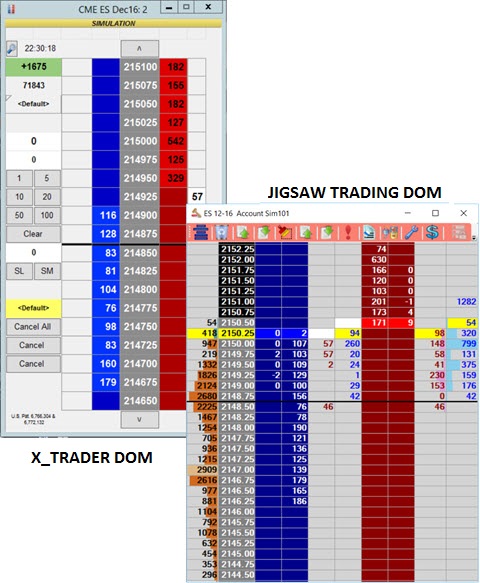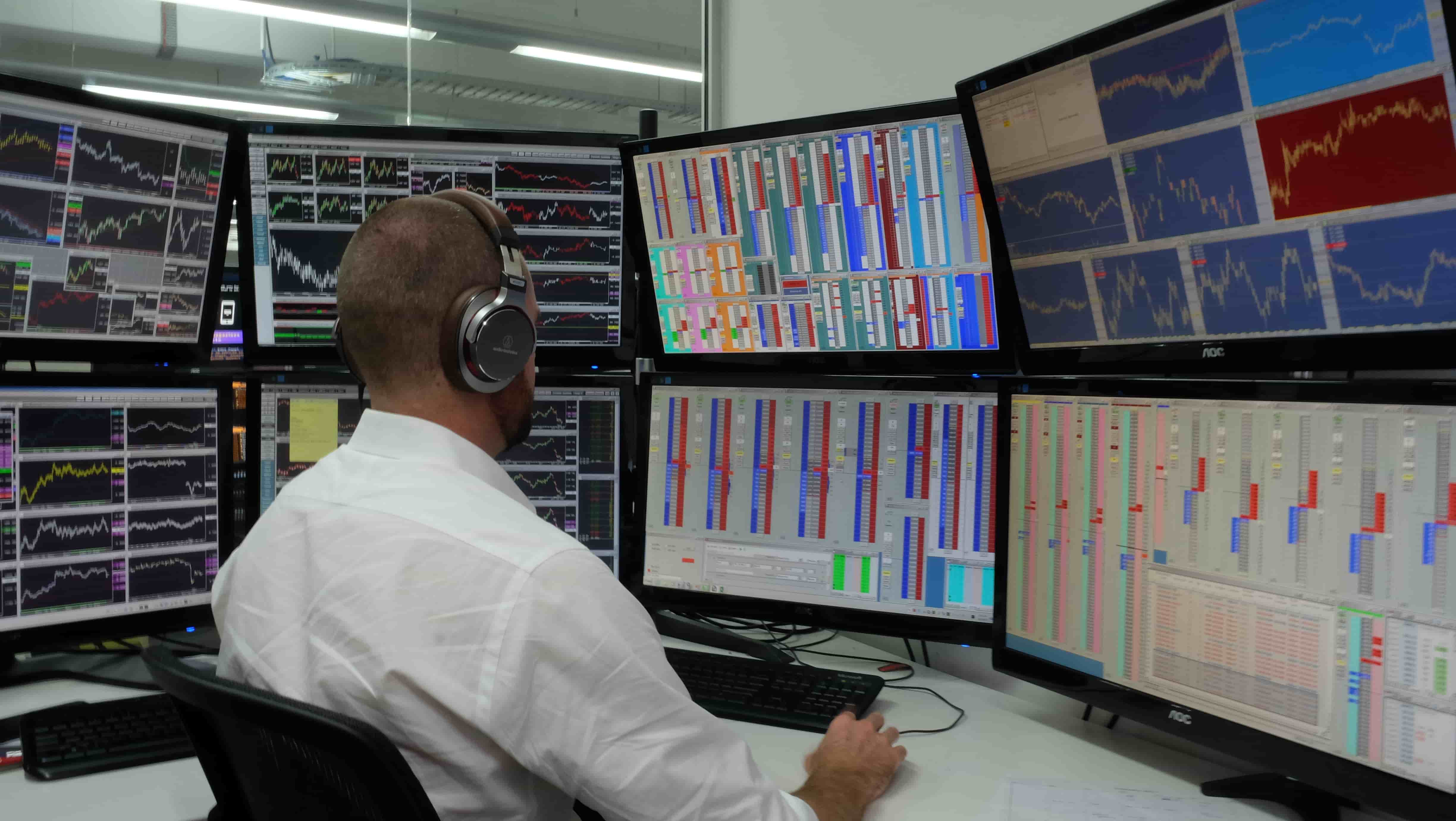You will need a trading platform that contains a Depth of Market (DOM) / Orderbook window for point and click trading. We are going to take all other trading tools out of the equation during the trading exercises. In short, this is because when faced with the uncertainty of using information you see in your DOM, you will way to easily resort to looking to your charts for patterns, such as support and resistance, if you have previously used charts for making trading decisions. Instead of drawing a line on a chart and figuring low risk opportunities from there (which is a dangerous game), it is much better to zoom in and learn how the game is being played in the first place by watching the market auction process in your DOM.

Prop Shop Trading Exercises – Trading DOMs
Complete these exercises using an accurate fill simulator where possible. Trading Technologies currently offer a Demo version of their Web MD Trader which incorporates an intelligent and realistic SIM fill engine. CQG also provide a quality SIM engine. You can ask your broker for a live demo of these platforms otherwise the links section at the end of this document contains suggestions for where you can access tools to complete the exercises.
Which Markets to Trade?
It is important to pick one market that you are likely going to trade in like cryptocurrency. If this is the case, you may find visiting a site like https://kryptoszene.de/broker/ to be useful to you. The skills you learn will transfer over to other markets after a familiarization period, however you will learn a significant amount of practical trading information for the market you complete these exercises on. We are going to focus on the Futures markets for the purposes of these exercises however you can adapt them to different trading products. Some reasons for trading futures:
- There is a central exchange (unlike the stock market) so all transactions are reported in the one place for you to observe. For those who are particular about this debate, OTC (Over the Counter) transactions are still reported in the time and sales within a certain time window – though can be ignored for the purpose of these exercises.
- Generally lower commissions (some brokers are now offering flat commission rates)
- Leverage available to trade futures is another good reason (which can be a double edged sword).
We want active futures markets with reasonable liquidity. You can choose a thin market such as Crude, however it is recommended to complete these exercises on thicker markets where the order flow and volume accumulation is clearer, since the price action is not whipping around in your DOM.
Thick Market Suggestions
T-Notes (10 Year US Treasury Note Future) – the ‘Notes’ can be a bit slow, but teach patience. It is easy to lean on prices and observe the volume trading at prices. You will need to be able to trade during the Treasuries Morning Session for 2-3 hours from around 8AM ET
S&P E-mini Futures (Mini futures for the S&P 500) – Generally provides the most liquidity and volume flow of all markets. The order flow can get overwhelming with a lot of buying and selling occurring at market at the same time. You will need to be able to trade during the US Stock Market Morning Session for 2-3 hours from 9:30 AM ET
Bund Futures on Eurex (10 Year ECB Bond Futures) – the ‘Bund’ is the highest volume market traded on the Eurex exchange. If the Bunds are not in a slow phase (like all markets go through) then you will get a lot of trading practice in with this one. The skills learned will transfer over to the T-Notes easily, but you will need to learn more patience. You will need to be able to trade from the Eurex open for 2 – 3 hours from 8AM CET or 3AM ET.
Thin Market Suggestions
Crude Futures (Light Crude Oil on NYMEX) – This is a very popular market with a lot of quick moves. While there are windows around the clock to trade this market, 8 AM ET is a good time to complete the exercises for a few hours
DAX Futures (Futures for a German stock index) – This very active thin market from 9AM CET or 4AM ET. It can be tricky to follow the order flow in the quick moves made, but provides plenty of volatility for getting in and out of the market during these exercises.
Euro Futures (EUR/USD Futures) – FX Futures provide some good opportunities and moves for the sake of completing these exercises. Most active during US trading hours and you will need to be actively trading from 9EST. European traders can trade this during the Europe session also.
Commitment Required for Trading Exercises
In some prop shop training programs – the pre-requisite to getting into the in-house training program is logging into their online training rooms each day for one month and proving you are actually watching the markets for a number of hours and clicking your way through the exercises. If you don’t have the discipline to complete 2 -3 hours of trading exercises every trading day for 3 – 4 weeks then you are going to have a hard time day trading for a living.
It is also important to complete the exercises as though it is your job, turning up at the same time each trading day to give it your best. It is important to trade each day for the exercises so you can experience the day to day variance in market behaviour over and over and learn to adapt. You will learn more about market behaviour, and what it takes to be a successful trader by actively trying to trade a market (simulation trades even) each and every trading day for 3 -4 weeks, then you would during years of standard trading education. You might also find out the quick way that day trading is not for you.
This means you will need to commit to your day trading training. At worst, pick a market you can trade outside your work hours daily for a couple hours. While completing the trading exercises can be fun, they can also be draining due to the mental overwhelm of trying to understand constantly changing information, the testing of your patience, frustration in profit making (we are trying to get over that in these exercises) and other factors, so plan accordingly to turn up each session revived and alert.
When to Start
All markets have their phase where traders are more active or quiet. During the North America and European Summer markets thin out. You will still have days when markets are dead in the middle of peak trading season. Usually this is leading into a big economic release such as the days leading into FOMC (Federal reserve meeting minutes) or NFP (Nonfarm Payroll) or equivalent in the European markets (ZEW and ECB mettings). You will ultimately need to tolerate quieter trading days and they are unavoidable so try not to get frustrated when volume is not trading even though you are fired up to trade – you will at least be learning patience. Its best to complete the exercises during the popular trading months which are generally:
February (January can be a bit slow) – May (before summer trading season)
September (after the summer trading season) – November (before Christmas holidays)

